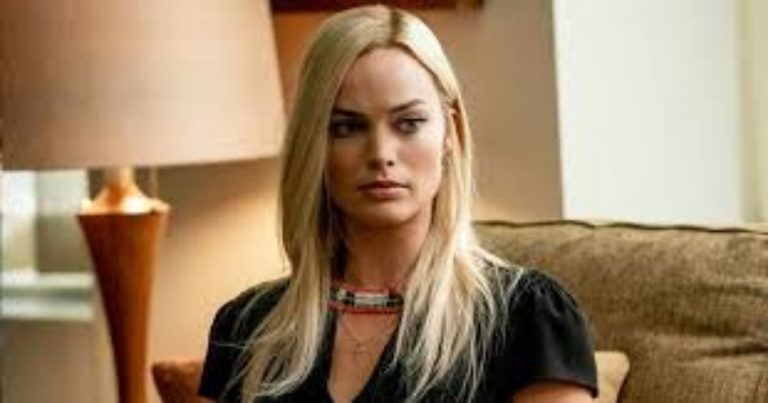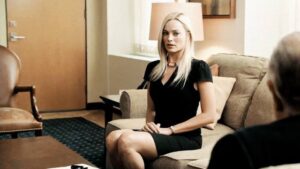
About two-thirds of the way through the ripped-from-the-headlines drama, Bombshell’s cringiest scene unfolds: a sequence of events that begins with the words “Stand up and give me a twirl” and culminates in humiliation.
A character named Kayla Pospisil (played by Oscar nominee Margot Robbie) is called before Fox News chief executive Roger Ailes (John Lithgow beneath layers of prosthetic jowl and wattle), who has ostensibly agreed to meet with the young segment producer to discuss her promotion from off-camera apparatchik to on-air talent — “Anchor Barbie” as a co-worker (SNL’s Kate McKinnon) calls it. But inside Ailes’s office, he skips past a discussion of her qualifications and simply orders her to stand and turn slowly in place so he can evaluate her physical attributes. Post-twirl, Ailes tells Robbie’s character to hike up her minidress higher and higher. We hear his breathing grow increasingly, discomfitingly labored. For Kayla, the episode ends in tears.
“It was about taking something from her, taking her dignity, and then having her feel ashamed enough that she doesn’t want anybody to ever know about this,” Bombshell’s director Jay Roach tells Vulture of the scene. “That’s the weird trap he’s laid for her. And the women we interviewed while researching described that feeling. I just wanted to make sure the emotional levels were there and that the empathy you would feel for this is just devastating. It certainly was for me in the room. I’ve never filmed anything as excruciating.”
Alongside Nicole Kidman and Charlize Theron, as Fox and Friends co-host Gretchen Carlson and The Kelly Files host Megyn Kelly, respectively, Robbie plays a composite character intended to represent the various women who came forward with horrific sexual-misconduct charges during Ailes’s tenure overseeing the top-rated news network. (Theron also helped develop the material and co-produced Bombshell.) As detailed in a 2016 New York Magazine feature, Carlson made her allegations public first, after experiencing years of sexual harassment, and her accounts were later confirmed by Kelly, who alleged that she had also been subject to Ailes’s predations, leading to a reported eight-figure settlement for Carlson and the executive’s ouster from the conservative-leaning cable giant he helped build.

The above scene underscores both the ambition of the film and its inherent challenges. Roach, the Emmy-winning writer-director behind Recount (2008) and Game Change (2012), and screenwriter Charles Randolph acknowledge the optics of taking on a project like Bombshell, particularly in an era when female filmmakers are still underrepresented in Hollywood. The “Stand up and give me a twirl” sequence required a particular form of self-awareness. “It had to be dark enough that we could put men who normally would not have these experiences inside Kayla’s heart and head, so they could experience it with her. But it could never tip into exploitativeness,” says Randolph, who claimed a 2016 Best Adapted Screenplay Oscar for his work on the financial dramedy The Big Short. “This is one of those situations where you have to let Charlize and other female producers lead the way. Jay and I had a couple of times where we were like, ‘Maybe we can tone this down. Maybe we can take this shot out, take that breathing down.’ And the women on the team universally said, ‘Do not touch a frame. You know that this is very important to this experience that the audience goes through it being as gut-wrenching as it was.’”
Theron personally enlisted Roach for the job, after he provided the Oscar-winning actress a detailed critique of an early version of the Bombshell script (which was initially set up at Megan Ellison’s Annapurna Pictures). “I did say to Charlize, ‘Are you sure you don’t want a woman to direct this? The number of women directors in Hollywood is so small, it’s such an embarrassing statistic,’” he recalls. “She just said, ‘Listen, I trust you and I trust the way you’re coming at this.’ Charlize’s collaboration and power in the overall hierarchy was imperative. It was just so clear this was going to be a team effort. Charles and I didn’t do anything without checking with her and our women producers and studio execs.”
Leave a Reply